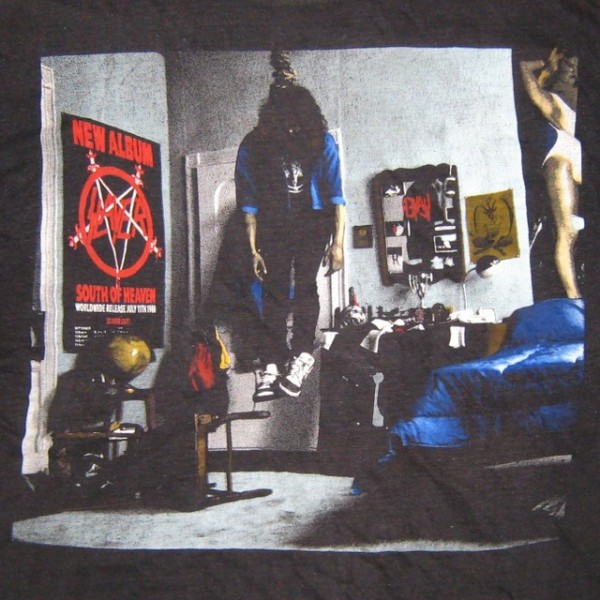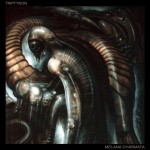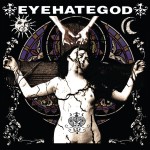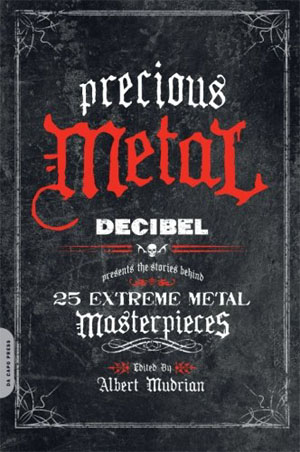What are Sadistic Metal Reviews? We enforce the reality the metal community runs in fear from: music can be judged objectively, but most people “prefer” junk. They want their music to make them look cool to their nitwit social groups, so they deliberately select moron music. Falses, don’t entry!
You do not hire the Navy SEALs to remove your fire ant infestation. Similarly, there is no point telling Tom G. Warrior to “make an album like all those other ones.” It’s the wrong tool for the job. This album is atrocious because it relies on very familiar and predictable ideas with no density, and then Warrior tries to shoehorn some depth into it but achieves on oil on water effect, like someone trying to layer Beethoven over Pantera. The result just dumb and painful. Run like hell.
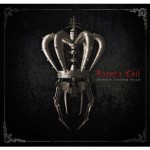 Lacuna Coil – Broken Crown Halo
Lacuna Coil – Broken Crown Halo
This isn’t even metal. It’s the same smarmy cheesy shit that they sing in lounges for drunk bluehairs in Vegas, but they shifted from open chords to power chords. There isn’t even any particular focus on riffs here, just some blithe chord progressions shifting in the background while the vocals take it. But even worse, the music is entirely predictable. This is different from being “basic” in that it’s not derived from simplicity, but a generic version of the same stuff everyone else does. But that “everyone else” aren’t metal bands, and these entryists are trying to sneak that moronic garbage in through the back door.
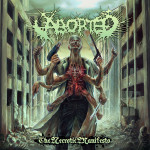 Aborted – The Necrotic Manifesto
Aborted – The Necrotic Manifesto
People are not bands. Bands are (composed of) people, but are not people. Even a band with good people in it can end up making music as interesting as poured concrete. “Oooh, look how flat it is!” But that’s kind of the problem here: Aborted is flat. It’s straight-ahead pounding death metal/grind hybrid that tends to like one- and two-chord riffs that shape themselves around a basic rhythm. Songs tend toward straight-ahead structures as well. The whole thing feels mentally hasty, like they aimed for a simple goal and then did one take and called it good enough. The highly compressed production just makes it excruciating to hear.
 Kill Devil Hill – Revolution Rise
Kill Devil Hill – Revolution Rise
Some bands you don’t want to be noticed listening to lest people think you’re an imbecile. Kill Devil Hill is warmed over 1980s Sunset Strip glam “metal” (i.e.: hard rock) with some alternative rock stylings and occasional Rob Zombie infusions. That’s it, and the style tells you the content. In addition to mind-numbing repetition, like all rock music this dunce material focuses on the vocalist and some imagined fantasy mystical “power” to very cheesy vocals emphasizing very obvious emotions. It’s like watching Shakespeare done by a troupe of brain injury patients. Even the attempts to be “edgy” by working in oddball found sounds and minor techno influences falls flat because the whole package is so blindingly obvious and equally as plainly designed for thumb-suckers.
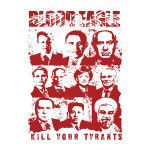 Blood Eagle – Kill Your Tyrants
Blood Eagle – Kill Your Tyrants
At least this has some balls, but metal needs both a warlike outlook and an interesting musical development. The latter is where Blood Eagle falls down: too much downstrumming, repetitive riff forms, repetitive song forms and reliance and skull-shakingly basic rhythms that involve a slamming conclusion makes this music no fun to listen to. It is like hearing a constant pounding with Pantera-style angry ranting in a death metal vocal over the top, but the plot rarely changes. When the band gives itself a little room for melody, as in the end of “Serpent Thoughts,” we see how much better this could have been. Instead it sounds like road rage stuck on repeat on a forgotten late night TV channel.
The New Orleans hit factory just keeps cranking them out. WAIT — that’s not what you want to hear about underground metal. Could the writer be implying that this trivial drivel is actually just pop music? Yes, yes he is. Eyehategod started out with a slow punk/grind mix that was boring but kind of aggressive. Then they made it with great production for Dopesick, which was a mildly interesting record. Since then, they’ve gotten closer to the hipster zone. Eyehategod makes me feel like I’ve stepped back into the early 1980s. Punk had just lost direction and every band was recycling old ideas or trying to be “different” with tricks that amounted to little more than stunts. The emptiness was staring us in the face, and no one was talking about it. This album is stereotypical hollow man hardcore with a bit of southern fried bullshit and a couple metal riffs. Why not just go listen to the failed albums by burnt-out and aged punk bands, because they at least have more consistent. This is just an odds ‘n’ ends drawer with a high production budget. You can sniff out the hollowness by how many times they hit you over the head with their image, working in every southern trailer failure term they can, and then performing their party act of ranting vocals over hard rock riffs. It breathes staleness and marketing like a home remortgaging plan.
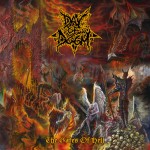 Day of Doom – The Gates of Hell
Day of Doom – The Gates of Hell
Metal bands should know by now to avoid the formula where the entire song is based around a vocal cadence, with guitars trying for a really basic pattern the vocals can play off of, and drums in perpetual fill mode. This means that the simplistic plodding patterns of vocals define everything else, which means everything else clusters around the lowest common denominator, and you end up with music whose sole (no pun intended) purposes is to make you tap your feet and wave your head to an undulating rhythm. This works great if you’re a sea anemone, but not so good for anything else. Day of Doom is one of those slow-strobing-strum bands that clearly intends for the whole audience to bounce at the same time in trope, but forgets that this is mindlessly boring when you’re not in a concert setting. It’s not that there’s anything wrong with these guys, but what they’re trying to do is wrong (as in unrealistic and stupid).
Mixed hardrock/punk, On Top has a clever name but otherwise is exactly as predictable as you might imagine. Lots of bouncy riffs, melodic choruses, angry vocals that specialize in repetitive tropes. If you derive a lot of value from doing the same thing others are doing at the same time, this might be your thing. It’s super-catchy like Biohazard or Pantera were, with plenty of syncopation in vocal rhythms to give them some kick, and songs even develop one level past pure circularity. It basically sounds like something you would expect the rebellious character to listen to in a movie as he drinks his whisky and drives fast. Other than this one-dimensionality, this is one of the few things in this review batch with any musicality. It’s just applied in such a way that people who aren’t drunk and sixteen will rapidly tire of.
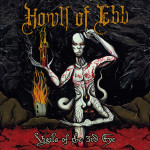 Howls of Ebb – Vigils of the 3rd Eye
Howls of Ebb – Vigils of the 3rd Eye
Howls of Ebb adopt an interesting strategy, which is to hide a Maudlin of the Well style quasi-prog in the midst of a dirty modern heavy metal band. At its core, this is heavy metal of the late 1980s variety, but this is carefully concealed under fast death metal riffs and whispered vocals which expand into dissonant chording and riff salads of the post-jazz-fusion era. The catchiness of the basic heavy metal riffing and the tendency to use tempo changes which fit in that model remain, but the weirdness accentuates it. If you can image Powermad adopting a bit of grunge and progressive metal, then slowing down half of its parts in a melodic jazzy style reminiscent of Absu crossed with Maudlin of the Well, you have the basic idea. The result is not only not bad but stands up to repeated listens. It will probably stay B-ranked in that its compositions make sense on a musical level but convey little else, and often the riff salads meander off-course enough to leave an impression but not a clear one. Still, this is more thoughtful than almost all of the metal at this commercial level and while it’s not underground, it’s much preferred to the usual tripe.
 Personal Device – Microorganismos del Mal
Personal Device – Microorganismos del Mal
First there was the faux 80s crossover thrash revival with party retro-thrash bands like Toxic Holocaust and Municipal Waste, then bands like Birth A.D. bounced back with actual thrash and reformed the genre. Now Personal Device take it a step both further and in a different direction by being a classic hardcore band that informs itself with early speed metal like the first Metallica and Nuclear Assault albums. The result is bouncy fast and precise punk like Ratos de Porao or even middle-period Bad Brains that is thoroughly enjoyable with riff breaks that resemble “The Four Horsemen” or maybe even “Live, Suffer, Die.” Their guitars are remarkably precise which creates an unusual sound for punk that by making it mechanistic makes it seem more inexorable than like protest music, and the result is a more testosterone-fueled and warlike approach. Mix that with the surging chord changes of speed metal and the fast repetitive chanted choruses from thrash, and you have a high-energy band. Its flaws are that experienced listeners may find this a bit too transparent, and that many of its rhythms are similar, but the band has administered its style with an editor’s red pen handy, cutting out any lesser parts, which gives it more staying power than all but a few albums in this stylistic range. This was a pleasant surprise to find in the review pile.
24 CommentsTags: aborted, blood eagle, day of doom, eyehategod, howls of ebb, kill devil hill, lacuna coil, on top, personal device, sadistic metal reviews, triptykon
